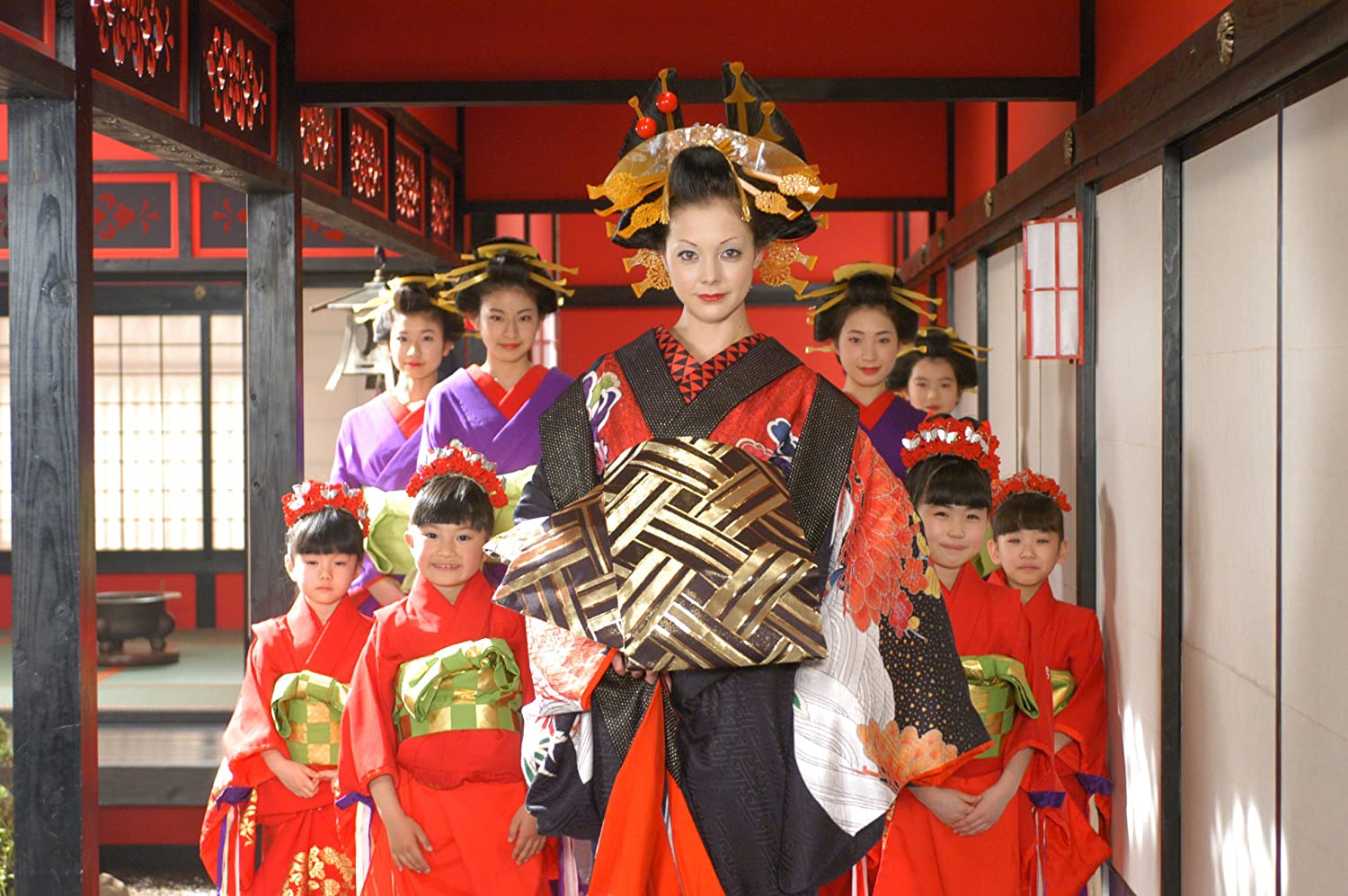Moyoco Anno’s Sakuran follows a rebellious young woman, eventually named Kiyoha, as she rises up from being a maid in a brothel to a very popular courtesan and all the ups and downs involved. It’s not romanticizing this life but it’s not shaming any of the women involved, either.

Anno’s art is wild and inventive and suits the story well. Kiyoha is able to convey so many emotions with a subtle facial expression and wide, expressive eyes. I like the loose quality of Anno’s lines because it contrasts the darker emotions that crop up throughout. I do feel like much of it is played too lightly, but at the same time, this is the life these women know.
There isn’t a strong structure to the manga — while each chapter does build on the previous one, they can mostly standalone. Kiyoha doesn’t change much through the title — she starts as woman who knows her own mind and is happily confrontational and ends as one. And that’s really the point of the manga — for all the fun that’s here, Kiyoha can’t escape her life and she’s willing to accept that.
However, it’s such a quick read I was left wondering if I missed something. I like what Anno is trying to say and I really enjoyed her art, but I think I was expecting something more, especially given my experiences with other of Anno’s works.
Sakuran (2006) was photographer Mika Ninagawa’s directorial debut and it carries all her trademarks — bright colors, flowers, goldfish and dreamlike imagery. She’s a good match for the energy of Anno’s manga.
Anna Tsuchiya plays Kiyoha with the right amount of vulnerability and verve. She’s a good match, visually, for Kiyoha with her large eyes and edgy beauty. She’s really the only character with any genuine presence and the movie rightfully focuses on her. The other characters just revolve around her.
The movie does insert a few elements that aren’t in the manga, such as Kiyoha’s friendly bond with a young man at the brothel and her life in the brothel after she returns from running away. Those things make Kiyoha’s story feel a bit more satisfactory.
I love Ninagawa’s work but I do think her imagery sometimes overshadows the overall plot of Sakuran. To be fair, as I said, there’s not too much to the story of Sakuran, but the visuals of this movie are definitely what carries it. It’s vibrant and always a treat to look at, but it’s a good case of style over substance. But when the style is this good, that’s highly forgivable.
I think this is probably the best movie that could have been made from the manga. I think Ninagawa and screenwriter Yuki Tanada understood Anno’s manga and brought a great deal of affection to the material. I don’t think this is a movie they would have made had they not been passionate about it. Still, even with their additions, I don’t think the source material had quite enough to offer to make the movie feels as complete as it could have. Still, Sakuran is a beautiful, seductive treat. The images of it will linger in my mind even if what happened will not. But I also feel that way about the manga.

